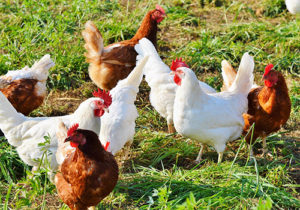The density of caged broilers is high, and the risk of disease is high. Many people are aware of the importance of biosafety control. However, due to their financial, material, and labor consumption, the direct benefits of these jobs are often ignored. Therefore, in the actual aquaculture work, it is rare to do according to the biosafety requirements, so that the position is less, but the success of the culture is put on the gambling luck. Now the epidemic situation is grim, old diseases are not eliminated, new diseases are constantly occurring, some viral diseases are constantly mutating, mixed between bacteria and bacteria, or secondary infections, which are accompanied by broiler breeding, serious damage, many breeding The family has pinned the success of the breeding on a large number of uninterrupted medications. This is undoubtedly a drinking and quenching thirst, forming a vicious circle. If the chicken does not develop an epidemic, the key is to eliminate the source of infection, block the transmission route, and do a good job in biosafety.
1. Disinfection
1.1 Admission channel
Disinfection tank 2~3% soda water, change once a week. Sprinkle 2~3% of caustic soda on the channel pad, and replenish it every day and keep the pad moist. The dressing room is equipped with UV lamps and hand-washing pots, and keep the floor and walls clean and free of debris.
1.2 Office area
1~2 times a week disinfection, 2~3% soda in the house, commonly used disinfectant in the house. Off-site personnel should be disinfected immediately after entering. The office area requires clean and no debris. The office requires items and documents to be neatly arranged and clean.

1.3 Production area
2~3% of caustic soda per week in the field. Disinfect the house with the prescribed disinfectant 1~2 times a week. The side window is sprayed twice a week with 2~3% caustic soda or a common disinfectant. The disinfection requirements of the field area do not leave a dead angle, and there are obvious disinfection marks on the ground and wall.
1.4 Treasury
No debris or waste products are required. All items stored in the warehouse are neatly arranged. They should be thoroughly cleaned and disinfected before storage. The warehouse should be fumigated once every 3 months (30ml formaldehyde/m3).
1.5 Water curtain equipment disinfection
Before use, the water storage tank and the water tank should be cleaned and disinfected. If there is residual water, it should be cleaned and then disinfected. Then, the water curtain should be cleaned and disinfected with disinfectant.
1.6 Chicken house equipment
After the chicken is riddled, the chicken battery cages, the manure belt, the septic tank and other septic equipment should be thoroughly cleaned, washed, disinfected and fumigated to ensure that there are no feathers and no feces.
2. Traffic management
2.1 Vehicle Management
Before the admission, the vehicle body is spray-sterilized with the commonly used disinfectant and then entered through the disinfection tank.
2.2 Outsider management
Drivers of various vehicles are not allowed to get off the train after entering the production area. It is strictly forbidden to enter the building.
2.3 Transportation Chicken Management
Under normal production conditions, if there are different batches of chickens in the field that cannot be sold at the same time, the chicken-drawn vehicles should be far away from the site for more than 1km, and the personnel in the field should not be in direct contact with the eliminated chicken vehicles and personnel.